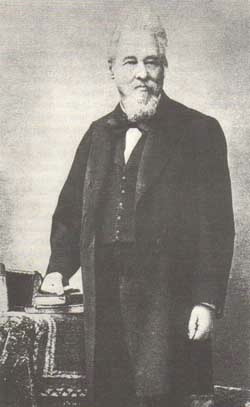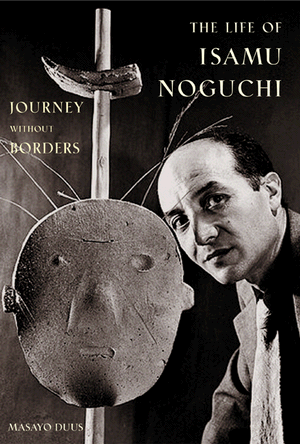Norbert Rillieux and a Revolution in Sugar Processing
American Chemical Society
National Historic Chemical Landmarks: Norbert Rillieux and a Revolution in Sugar Processing
2002
Judah Ginsberg

Portrait of Norbert Rillieux (undated).
Dedicated April 18, 2002 at Dillard University in New Orleans, Louisiana
Norbert Rillieux: Chemist and Engineer
The birth record on file in New Orleans City Hall is spare: “Norbert Rillieux, quadroon libre, [free quadroon] natural son of Vincent Rillieux and Constance Vivant. Born March 17, 1806. Baptized in St. Louis Cathedral by Pere Antoine.”
Vincent Rillieux was an inventor himself who designed a steam-operated press for baling cotton. He appears to have had a long relationship with Constance Vivant, “a free woman of color,” and one of their sons, Norbert, became what is now called a chemical engineer. The use of the father’s surname and the baptism in New Orleans’ cathedral indicate the paternity was publicly acknowledged.
As a boy the precocious Norbert showed an interest in engineering, and his father sent him to France for his education. By the age of 24, Rillieux was an instructor in applied mechanics at the Ecole Centrale in Paris. Around 1830, Rillieux published a series of papers on steam engines and steam power.
While in France, Rillieux began working on the multiple effect evaporator. As George Meade, a sugar expert, wrote in 1946: “The great scientific contribution which Rillieux made was in his recognition of the steam economies which can be effected by repeated use of the latent heat in the steam and vapors.” What Rillieux did, and what became the basis for all modern industrial evaporation, was to harness the energy of vapors rising from the boiling sugar cane syrup and pass those vapors through several chambers, leaving in the end sugar crystals.
Rillieux’s evaporator was a safer, cheaper, and more efficient way of evaporating sugar cane juice than the method then in use, the Jamaica train. In this system, teams of slaves ladled boiling sugar juice from one open kettle to another. The resulting sugar tended to be of low quality since the heat in the kettles could not be regulated, and much sugar was lost in the process of transferring juice from kettle to kettle.
Some Louisiana sugar planters quickly understood the significance of Rillieux’s invention, and he returned to New Orleans in the early 1830s, years that coincided with a sugar boom. Rillieux tinkered with his invention over the next decade, and in 1843 he was hired to install an evaporator on Judah Benjamin’s Bellechasse Plantation. Benjamin, a Jewish lawyer who later served as secretary of war in the Confederacy, became Rillieux’s staunchest supporter in Louisiana sugar circles. Benjamin wrote in 1846 that sugar produced with the Rillieux apparatus was superb, the equal of “the best double-refined sugar of our northern refineries.”
The success of his evaporator apparently made Rillieux, according to a contemporary, “the most sought after engineer in Louisiana,” and he acquired a large fortune. But while his invention no doubt enriched sugar planters, Rillieux was still, under the law, “a person of color” who might visit sugar plantations to install his evaporator but who could not sleep in the plantation house. (Nor, for that matter, could a man of Rillieux’s accomplishments be expected to stay in slave quarters. Some planters, it appears, provided Rillieux with a special house with slave servants while he visited as “a consultant.”). As the Civil War approached, the status of free blacks deteriorated with the imposition of new restrictions on their ability to move about the streets of New Orleans and other draconian laws.
It was about this time that Rillieux moved back to France. Race relations may have played a part in his decision. At one point, Rillieux became incensed when one of his applications for a patent was denied initially because authorities mistakenly believed he was a slave and thus not a citizen of the United States. The declining profitability of the sugar industry in Louisiana also may have been a factor. In any event, in Paris, Rillieux developed a passion for Egypt. In 1880, a visiting Louisiana sugar planter found Rillieux deciphering hieroglyphics at the Bibliotheque Nationale. Rillieux died in 1894 and was buried in the famed Paris cemetery of Pere Lachaise. His wife, Emily Cuckow, lived comfortably for another eighteen years…
…Neither slave nor free
Americans pouring into the newly purchased Louisiana Territory encountered a social caste virtually unknown in the Eastern seaboard States: gens de couleur libre, free people of color. In the early years of the nineteenth century, free blacks comprised 25 percent of the population of New Orleans, far higher than in most other areas of the American South, where nearly all blacks were slaves.
The number of free blacks in New Orleans was due in part to the French and Spanish heritage of Louisiana. Both France and Spain had lenient manumission policies and both encouraged slaves to purchase their freedom. But the majority of free blacks resulted from sexual relations between white men and black women. One Spanish bishop lamented, “a good many inhabitants live almost publicly with colored concubines” and they consider the issue of such liaisons “as their natural children.” Finally, the ranks of the gens de couleur libre swelled in the early years of American control of New Orleans with the influx of thousands of light-skinned freemen fleeing the internecine warfare in the new black Republic of Haiti.
In the eighteenth century, Louisiana free blacks enjoyed a higher social status and had more rights than the small free black population of the English colonies. Their condition would deteriorate under American control, but it remained true that free blacks maintained a privileged status in the antebellum years. As late as 1856, the Louisiana Supreme Court ruled that under Louisiana law there is “all the difference between a free man of color and a slave, that there is between a white man and a slave.” Indeed, a few free blacks even belonged to the planter class, owning slaves themselves…
Read the entire article here.




